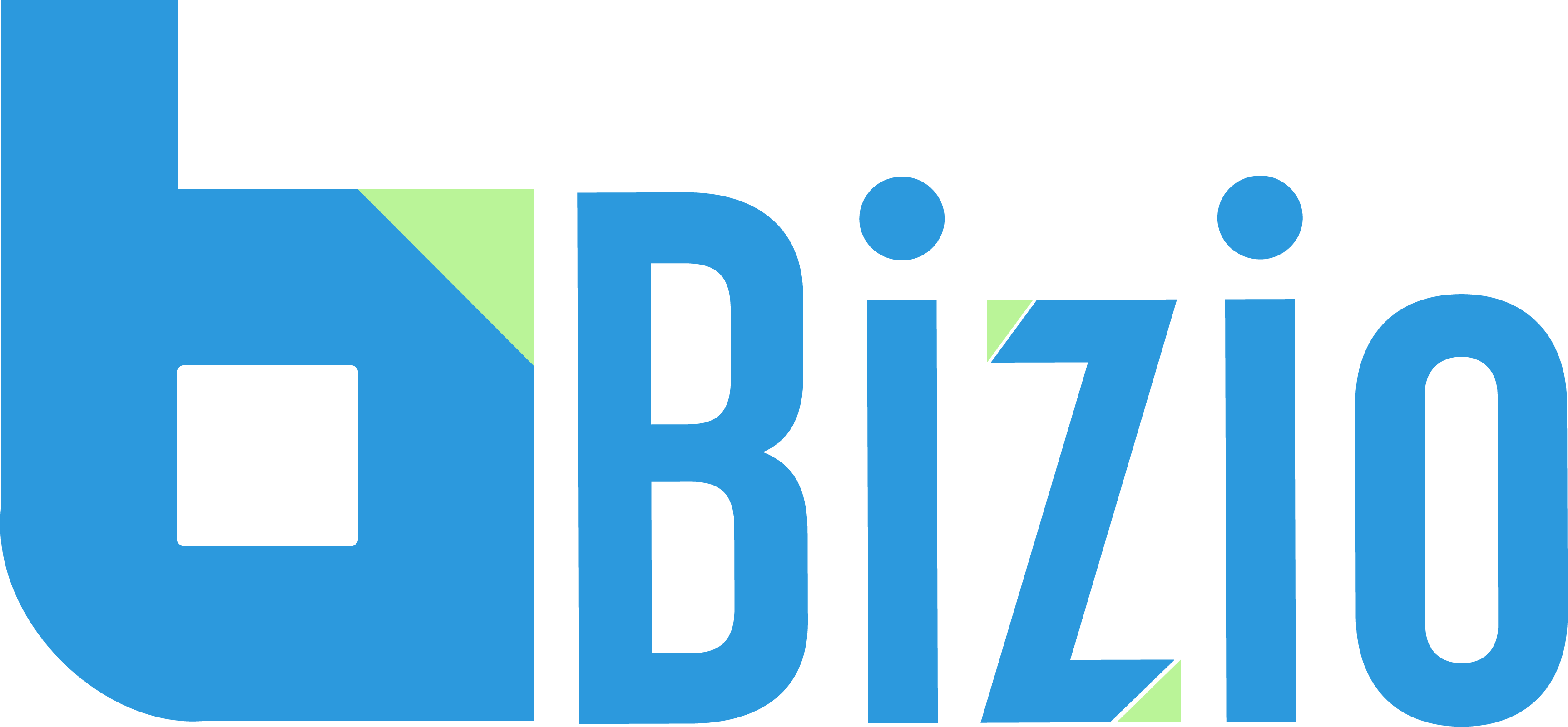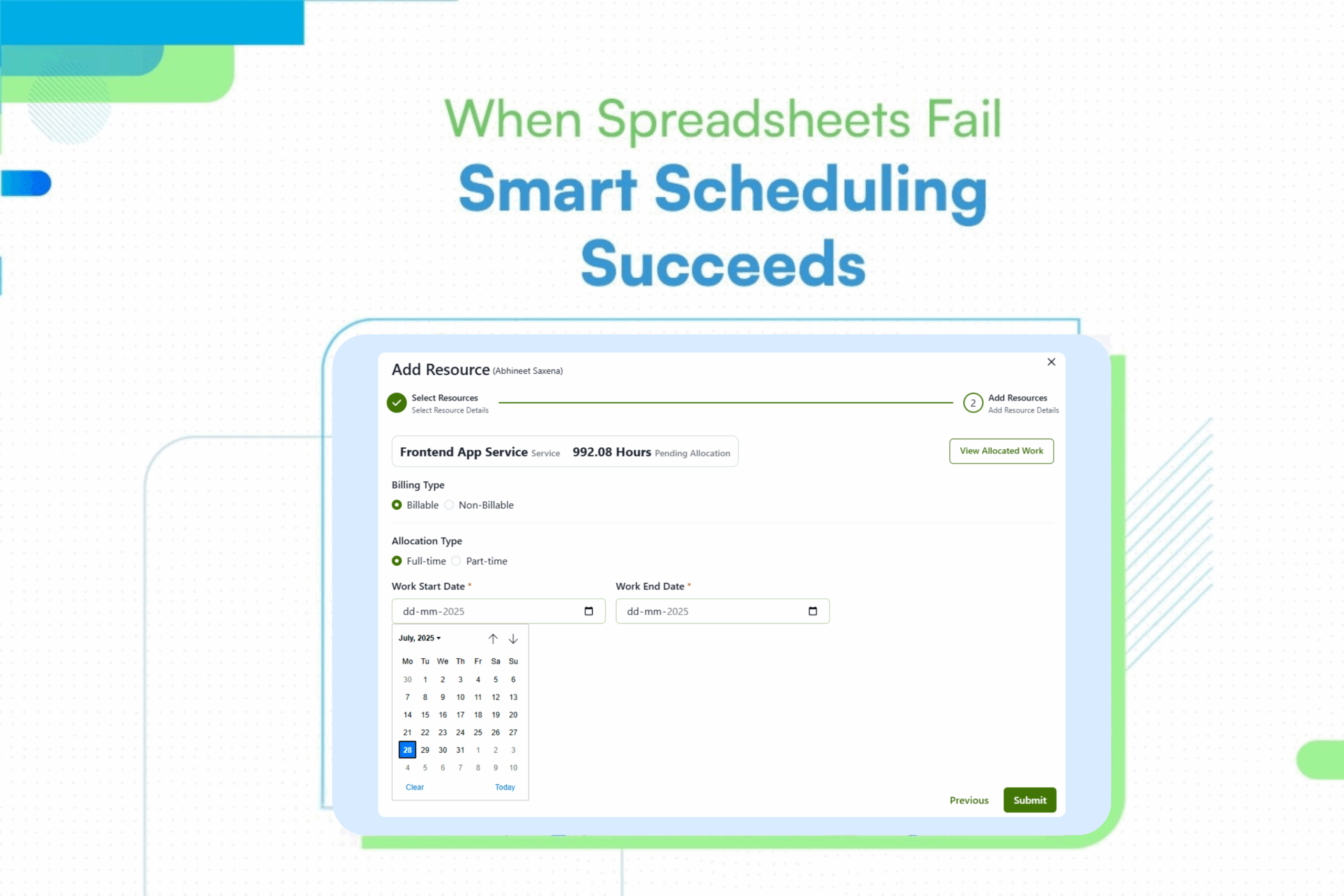- 30
- July
Shikha Bhavsar
The Challenge: Disconnected Teams and Manual Planning
Service companies typically operate with fragmented systems that create more problems than they solve.- Marketing teams track leads in one tool, project managers plan timelines in Excel, and finance monitors budgets in separate software. This disconnect breeds confusion and costly mistakes.
- Spreadsheets become the default solution, but they fail spectacularly under pressure.
- Version control disappears when multiple people edit the same file.
- Critical updates get lost in email chains.
- Team members work with outdated information, leading to double bookings where two projects compete for the same resources on identical dates.
- Underutilization strikes just as hard. Skilled developers sit idle while urgent projects lack proper staffing. Senior consultants handle junior-level tasks because no one has visibility into team capacity.
- Manual planning makes it impossible to optimize resource allocation across multiple projects running simultaneously.
How Bizio Brings Clarity to Resource Management
Bizio transforms resource management by connecting every piece of your operation on a single platform. Rather than forcing teams to adapt to rigid software, Bizio aligns with how service businesses work. The platform creates a unified view where project requirements meet team availability. Managers see which resources are committed, which are available, and where conflicts might arise before they become problems. This clarity extends from high-level strategic planning down to daily task assignments. Every project, person, and timeline lives in one connected system. Sales teams input project requirements, operations teams assign resources, and delivery teams execute with complete visibility into expectations and constraints.Smart Scheduling with Bizio
- Visual project timelines replace the guesswork that plagues traditional planning. Project managers drag and drop tasks along calendar views, instantly seeing how changes affect other commitments. Dependencies become clear, bottlenecks surface early, and realistic delivery dates emerge from data rather than wishful thinking.
- Role-based task allocation ensures the right people work on appropriate assignments. Senior architects handle complex design decisions while junior developers manage routine coding tasks. The system suggests optimal assignments based on skills, availability, and project requirements.
- Task-wise progress tracking provides granular visibility without micromanagement. Team members update their progress, managers monitor overall project health, and stakeholders receive accurate status reports automatically. Problems get flagged before they derail entire projects.
Real-Time Visibility for Better Decisions
- Live status updates eliminate the delays that kill project momentum. When developers complete tasks, designers immediately see their queue update. When clients request changes, project managers instantly understand the ripple effects across timelines and budgets.
- The centralized task dashboard becomes mission control for operations managers. They spot overloaded team members, identify underutilized resources, and redistribute work to maintain optimal productivity. Real-time data enables proactive management instead of reactive crisis response.
- Project-wise and resource-wise profitability insights reveal which types of work generate the best returns. Companies discover that certain project configurations consistently exceed profit targets while others drain resources. This intelligence guides strategic decisions about client acquisition and service offerings.
Collaboration That Keeps Everyone Aligned
- Team-wise project stage views ensure everyone understands their role in the bigger picture. Developers know when designs will be ready, content creators understand technical constraints, and quality assurance teams prepare for upcoming deliverables.
- Coordination across departments happens naturally when everyone works from the same information. Sales teams set realistic expectations based on actual capacity. Operations teams plan resources around confirmed project timelines. Finance teams track costs against real progress rather than estimates.
- Task dependencies and accountability features prevent projects from stalling due to unclear ownership. Team members receive notifications when their contributions unlock others' work. Managers identify bottlenecks before they cascade into project delays.


